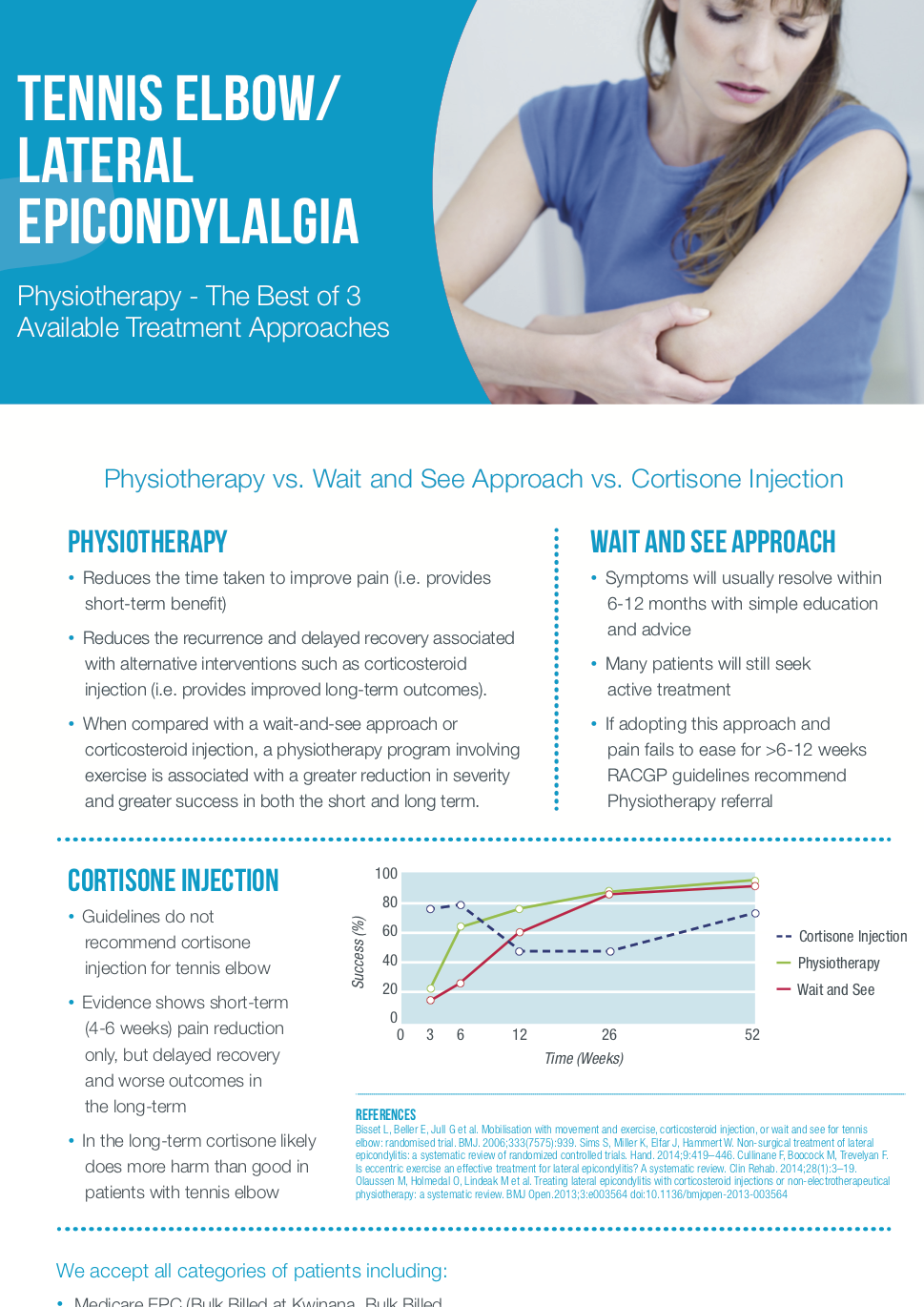Physiotherapy Outperforms Cortisone Injections and a Wait and See Approach
If you’re struggling with persistent elbow pain from tennis elbow (lateral epicondylalgia), this blog post is for you. Multiple high-quality studies have compared different the three main treatment options-
- Wait and See
- Cortisone Injections
- Physiotherapy
Skip ahead to the image at the bottom of the blog to see the study results in graphical form.
WAIT AND SEE
“Can’t I just give it some rest and wait for this tennis elbow to get better on its own?” This is a common approach, known as the “wait and see” method. With some basic education and activity modification, the studies show tennis elbow symptoms usually improve in the long term (6-12 months) by just staying patient.
Whilst this is good news, the problem with this method for most people is that 6-12 months is far too long to wait for improvement, particularly if tennis elbow is affecting your ability to work, your sporting activities or just your ability to perform day to day activities.
If your elbow pain doesn’t start easing up within 6 weeks, current Royal Australian College of General Practitioners guidelines recommend pursuing physiotherapy.
CORTISONE INJECTIONS
Another common treatment for tennis elbow is corticosteroid injections. A cortisone injection can provide some short-term pain relief, which usually lasts around 4-6 weeks. Unfortunately, the research clearly demonstrates that getting a cortisone injection for tennis elbow leads to higher rates of recurrence and delayed recovery compared to other treatment methods. In the long-term, cortisone injections seem to do more harm than good. A good way to think of cortisone injections and tennis elbow, is that they cause “some short-term gain, but long-term pain.”
Note, there may still be rare instances where cortisone injections are indicated for tennis elbow, but these are the exception rather than the norm.
PHYSIOTHERAPY
Physiotherapy is the most successful treatment for tennis elbow, supported by multiple scientific studies. Physiotherapy in these studies consists of a comprehensive exercise program, manual therapy, advice and any other modalities deemed appropriate (this may include things like taping or bracing).
Compared to cortisone injections or “wait and see”, Physiotherapy treatment results in:
- Faster reduction in pain levels (short-term benefit- for example approximately 60% of people are improved at 6 weeks post-injury, compared to 20% for “wait and see”)
- Lower rates of symptom recurrence vs cortisone injections (long-term benefit)
- Greater overall treatment success
The latest data shows an approximately 90% success rate at 52 weeks for patients who received physiotherapy exercise for their tennis elbow. Those people improved faster than those who chose to wait and see, and have better long-term outcomes than those who chose cortisone.
While tennis elbow can certainly be a stubborn, painful condition, modern physiotherapy provides the most effective and long-lasting solution. At Kwinana Physiotherapy, our physiotherapists have extensive experience designing and guiding tailored exercise rehab programs to treat lateral epicondylalgia. We combine education, hands-on treatment, and a customised home exercise plan to tackle the problem from all angles based on proven methods.
For a video summary of this blog, click here. Alternatively, check out the image below for an easy to understand one page visual summary of the best treatment for tennis elbow!


